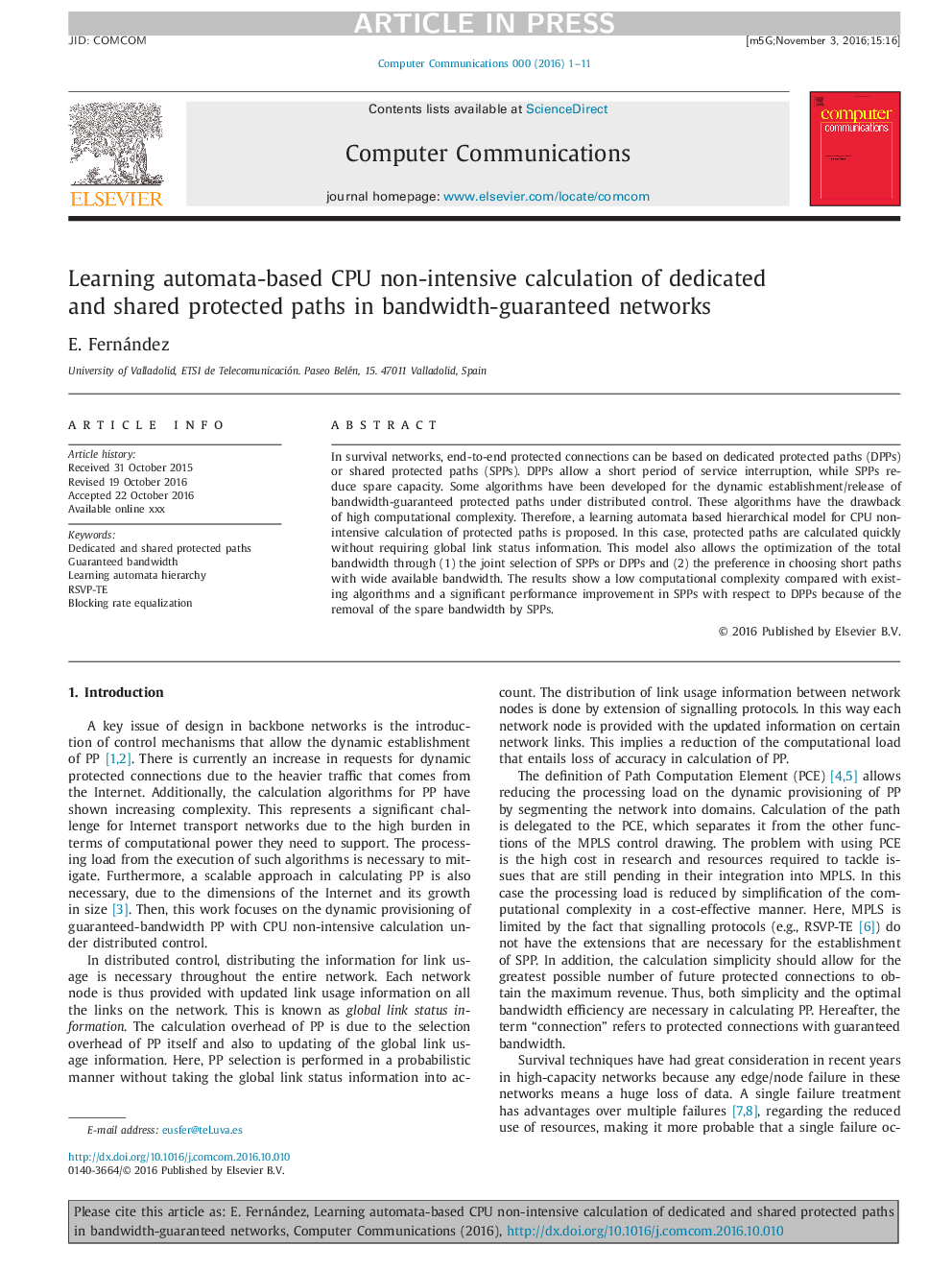| Article ID | Journal | Published Year | Pages | File Type |
|---|---|---|---|---|
| 4954379 | Computer Communications | 2017 | 11 Pages |
Abstract
In survival networks, end-to-end protected connections can be based on dedicated protected paths (DPPs) or shared protected paths (SPPs). DPPs allow a short period of service interruption, while SPPs reduce spare capacity. Some algorithms have been developed for the dynamic establishment/release of bandwidth-guaranteed protected paths under distributed control. These algorithms have the drawback of high computational complexity. Therefore, a learning automata based hierarchical model for CPU non-intensive calculation of protected paths is proposed. In this case, protected paths are calculated quickly without requiring global link status information. This model also allows the optimization of the total bandwidth through (1) the joint selection of SPPs or DPPs and (2) the preference in choosing short paths with wide available bandwidth. The results show a low computational complexity compared with existing algorithms and a significant performance improvement in SPPs with respect to DPPs because of the removal of the spare bandwidth by SPPs.
Keywords
Related Topics
Physical Sciences and Engineering
Computer Science
Computer Networks and Communications
Authors
E. Fernández,
